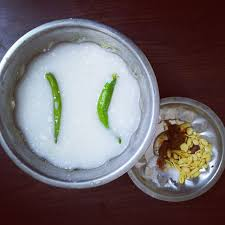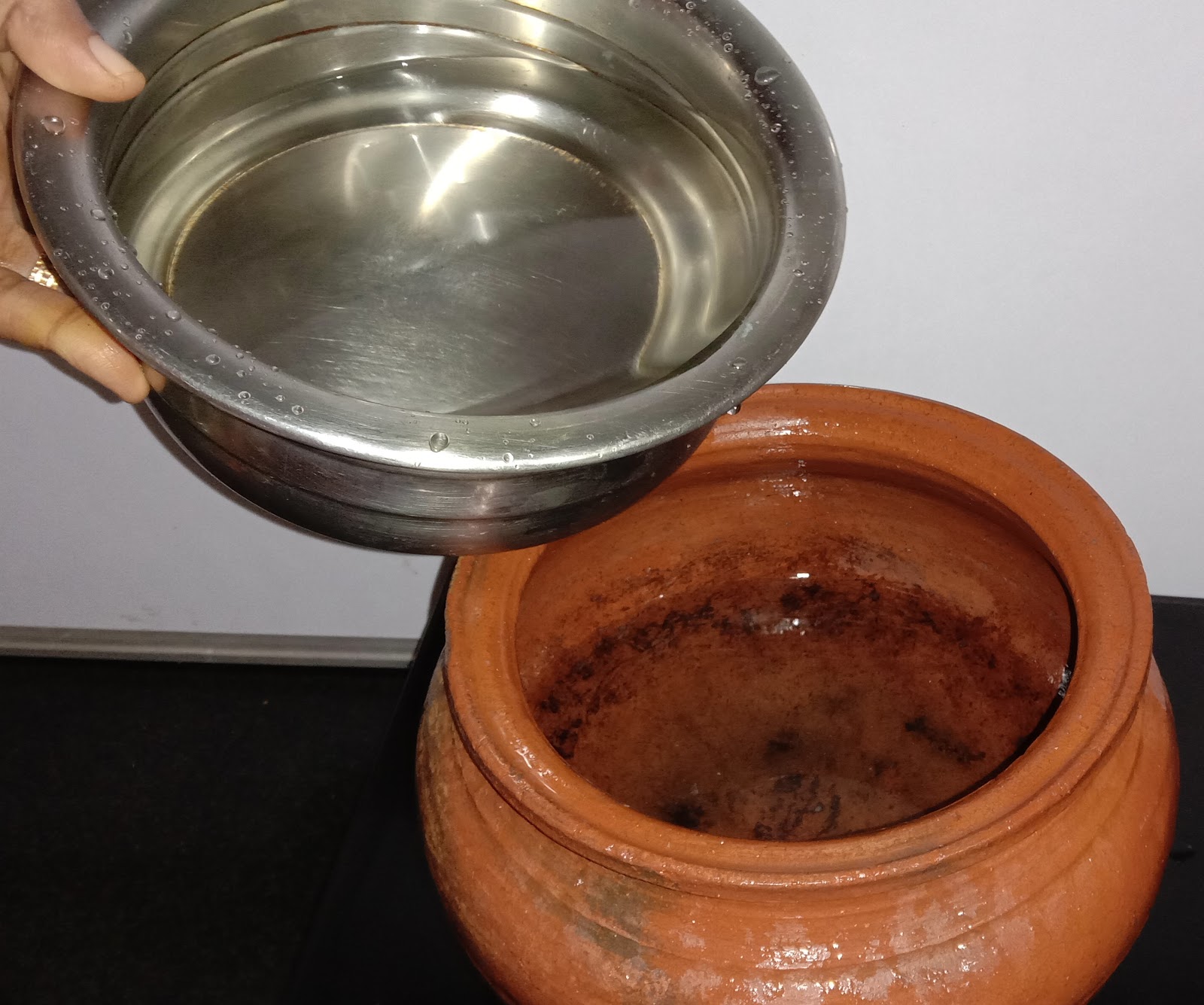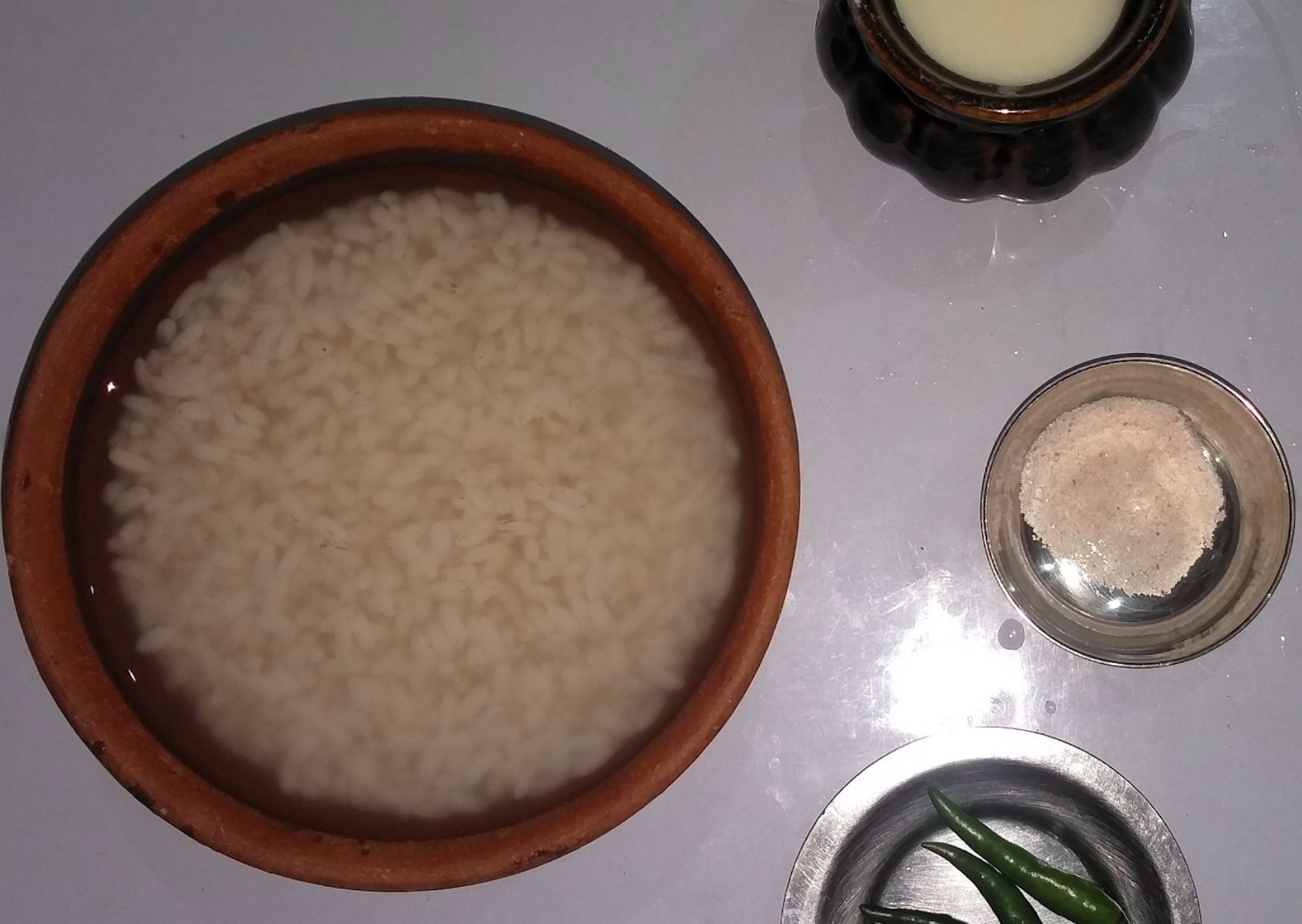Pazhalaya Soru | Fermented Rice
Leftover rice soaked in water from a previous night and served as breakfast (pazhaya soru) is much sought after in all parts of South India because of its high nutritional value.
Introduction
About this Recipe
Hinduism is Greater Science, in every aspect of life. It does not serve food, just to fill the void in our stomachs; but to fill the subtler and deeper void within.
Supreme Pontiff of Hinduism Jagatguru Mahasannidhanam His Divine Holiness Sri Nithyananda Paramashivam reveals the greater science of how not just food, but life itself is digested in the intestine (stomach). It now explains why almost all spiritual hindu practices are coupled with fasting or other dietary alterations, to reduce the load on our intestines, and digest life at a deeper level.
Hindus achieved great breakthroughs in various fields due to our increased ability to cognise and digest life and its happenings, and this was because of our unique style of eating.
SPH Recommends Pazhaya Soru to Experience Paramashanta Swarupa:
In His satsang on November 2, 2020 Supreme Pontiff of Hinduism Jagatguru Mahasannidhanam His Divine Holiness Sri Nithyananda Paramashivam speaks about Paramashanta Swarupa thus:
The bliss of Paramashanta seek that absolute peace inside you through unclutching. You will have so much nectar-infused body and mind.
I give you a simple technique to experience this paramashanta swarupa. Just eat pazhaya sorum pachai milagaayum; means, rice cooked and soaked in water previous night. Next day morning, drink that water and eat the rice with green chilli! It is more like medicine. You can add mango or simple vegetables if you want.
Have only one meal a day of pazhaya sorum pachai milagaayum. It will burn the stomach and cleanse all the toxins. There won’t be anything left inside your body to make you feel heavy. It will do such detoxing. Then practice unclutching. Do this for one week. You will have so much strength inside. You will just shift the gear in your life.”
SPH Sri Nithyananda Paramasivam, satsang on Unclutching on November 2, 2020
The staple food grain of India is rice. In its humblest form, rice is made into a gruel or porridge called kanji, ganji, pez, ambil. The English dictionary refers to this as Congee. Valued for the nutritional strength of the starch in this porridge where the rice is boiled to a soft consistency, the congee is the staple food in many parts of India.
Pazhaya Soru-Fermented Rice
Leftover rice soaked in water from a previous night and served as breakfast (pazhaya soru) is much sought after in all parts of South India because of its high nutritional value. Pazhaya soru or fermented rice, is called Panta Bhaat in Bengali and is a popular dish, traditionally served in the morning with salt, lime, onion, chili. It is consumed in the eastern Indian states of Odisha, West Bengal, Jharkhand, Assam, Tripura and in the neighbouring country of Bangladesh. It is a popular dish on the day of Pahela Baishakh or Bengali new year.
It is also popular in the South Indian states of Kerala, Tamil Nadu, Andhra Pradesh, Telangana and Karnataka too. It has been described in documents from the 17th century. It is consumed in East and South East Asia as well, and is known as Jiuniang in China.

“Have only one meal a day of pazhaya sorum pachai milagaayum.
It will burn the stomach and cleanse all the toxins.
There won’t be anything left inside your body to make you feel heavy.
It will do such detoxing. Then practice unclutching.
Do this for one week. You will have so much strength inside.
You will just shift the gear in your life.”
– SPH JGM Nithyananda Paramasivam
- Preparation time: 12 hours (Soaking time: 4 hrs. Fermentation time: 8 hrs.)
- Cooking time: 20 minutes
- Total time: 12 hours and 20 minutes
- Servings : 5-6 persons
- Course: Main Course in breakfast
- Cuisine: Tamil Nadu cuisine
Ingredients
- Raw Rice – 425 gms (2.3 cups)
- Urad dal – 375 gms (1.8 cups)
- Fenugreek – 15 gms (3.5 teaspoons)
- Black Pepper – 15 gms (3.5 teaspoons)
- Cumin seeds – 15 gms (3.5 teaspoons)
- Dry ginger powder – 15 gms (3.5 teaspoons)
- Asafoetida – 3 gms
- Curry leaves – a handful
- Sesame oil – 125 ml
Preparation Method
- First, wash the rice and urad dal well separately.
- Then soak the rice and fenugreek together and urad dal separately for more than 4 hours in sufficient water.
- After four hours, drain the urad dal water and grind the urad dal to a butter consistency and keep it aside.
- Then grind the rice, like a white rava (semolina)/coarse consistency and keep that aside as well.
- Now add the urad dal batter and salt in the rice batter, mix all of this very well and leave it aside to ferment for at least 8 hours.
- Coarsely powder the pepper and cumin seeds separately and keep it aside.
Cooking Method
- Now after 8 hours of fermenting, idli batter is ready and we have to season the batter.
- Add sesame oil in a pan. Once it is hot, put the pepper powder, cumin powder, dry ginger powder, asafoetida powder and curry leaves into the oil and fry a little.
- Add this seasoning to the idli batter and mix well.
- Next, the batter has to be poured into a container like a steel tumbler to cook the idlis, to obtain the cylindrical shape.(Traditionally, bamboo baskets are used as a mould. If these are not available, steel/brass tumblers can be used as containers for the moulds. To avoid leakage of the batter, plantain/banana & mandara leaf are used to line the bottom and inside of the tumbler/container. Use 3 mantharai leaves around the sides as well. The mantharai leaves are the traditional leaves used for this recipe and are very good for health.)
- Place the idli vessel on the stove and pour water into it. Boil the water until it comes to a steam. The idlis have to be cooked in this steam. Note: If you don’t have an idli vessel, you can use any steamer you use at home
- Now pour the batter in the moulds and place them carefully upright in the idli vessel – as many moulds as can fit into the idli vessel.
- Place a plantain leaf on the top of the moulds to cover it and then close the lid of the idli vessel.
- Allow the idlis to cook for 20 minutes. Note – cooking times may vary as per the steamer you are using.
- Use a small knife or a thin stick/toothpick to check whether the idlis are cooked.
Poke the stick into one idli, if the stick comes out clean, the idlis are done.
- Then, remove the idlis from the idli vessel carefully, and place it on a plate to cool.
- Kanchipuram idlis are now ready to be served. Remove the leaf covering the idlis before serving!
Step by step instructions
1
Place clay pot on the stove. Transfer water into the pot and bring to boil. Meanwhile, also wash the rice.

2
When the water boils, add the washed rice and close with a lid to allow the rice to get cooked.

3
After a few minutes of adding the rice, you see because of closed cooking, the steam pushes the lid outside. Remove the lid and allow the rice to get cooked in open.

4
Once the rice is cooked, drain the excess water/starch.

5
Cool the rice in air temperature for 1-2 hours.

6
Add cool water to the rice till it is about an inch above the rice.

7
Cover the rice with a thin cotton cloth or a lid. Leave this soaked rice for 12-15 hours to become fermented.

8
After 12–15 hours/overnight, pazhaya soru is ready to be consumed. Add salt, buttermilk and sliced green chillies to it.

9
Offer pazhaya soru as naivedyam to Swamiji!





